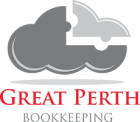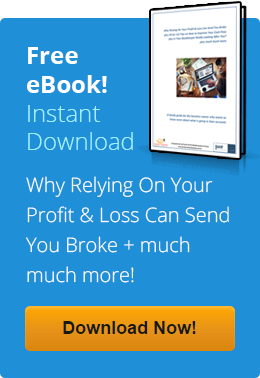The Profit and Loss Report shows how much revenue and expenses a company has generated over a certain period. The Profit and Loss Report is the most commonly used but also the most commonly misunderstood financial report.
The Profit and Loss Report is a summary of the financial performance of a business over a period of time (typically monthly, quarterly or annually.) It reflects the past performance of the business and is the report most often used by small business owners to track how well their business is doing.
As the name indicates the Profit and Loss Report (also known as a Statement of Financial Performance or an Income Statement) measures the profit or loss of a business over a specified period. A profit and loss statement summarises the income for a period and subtracts the expenses incurred for the same period to calculate the profit or loss for the business.
Producing regular profit and loss statements (at least quarterly or monthly) will enable you to:
- Answer the question, “How much money am I making, if any?”
- Compare your projected performance with actual performance
- Compare your performance against industry benchmarks
- Use past performance trends to form reasonable forecasts for the future
- Show your business progress (good or bad) and financial health over time
- Detect any problems regarding sales, margins and expenses within a reasonable time so adjustments may be made to recoup losses or decrease expenses
- Provide proof of income if you need a loan or mortgage; and
- Calculate your income and expenses when completing and submitting your tax return
At Great Perth Bookkeeping we will regularly provide you with an up to date Profit & Loss Report and go through it with you looking for trends that may lead to opportunities or potential problems ahead.
To make sense of a Profit and Loss Report you will need to know the basis on which it has been prepared. This could be either Cash Basis or Accruals Basis.
Cash accounting tracks the actual money coming in and out of your business. In cash accounting, if you get an invoice for something, you don’t record the cost in your books until you’ve paid the invoice. Similarly, when you send an invoice to a customer, you don’t record the sale in your books until you receive the money from the customer.
For example, if you send an invoice on Tuesday, and don’t receive the payment in your account until Thursday, you record the income against Thursday’s date in your books.
In accrual accounting, you record expenses and sales when they take place, instead of when cash changes hands. For example, if you’re a builder and have sent an invoice for a project you’ve completed, you record the sale in your books even though you haven’t received payment yet.
This way of accounting shows the amounts you owe to people and the amounts owing to you.
Cash accounting is:
- A simple system that keeps track of your business cash flow
- Generally suited to smaller businesses that mostly handle transactions in cash, for example a hairdresser’s or a grocery store
- Provides a picture of how much money you have in your till and in your bank accounts
- It doesn’t capture money that is owed to you or money you owe to others
Accrual accounting is:
- More complicated than cash accounting
- Better suited to businesses that don’t get paid straight away
- A system that tracks your true financial position as it captures money that is owed to you and money you owe others
- Helpful if you are dealing with lots of contracts or large amounts of money.
Accrual accounting is more complicated than cash accounting so you’ll need an in-depth understanding of bookkeeping methods or a professional to help you out.
Most computerised accounting packages produce a Profit and Loss Report using the Accruals Basis as the default but provide the option to switch to Cash Basis. Accruals Basis accounting is required by Australian and International Accounting Standards and is the preferred method as it provides a better understanding of the relationship between income and the costs associated with generating that income. However, for many small businesses, the added complexity may not be justified or even needed.
For more information download our awkwardly titled FREE eBook Why Relying on Your Profit & Loss Report Can Send You Broke plus Ten (or 11) Tips on How to Improve Your Cash Flow plus Is Your Bookkeeper Really looking After You plus Much Much More!
Contact Great Perth Bookkeeping if you need any help in understanding your Profit & Loss Report.





Leave a Reply